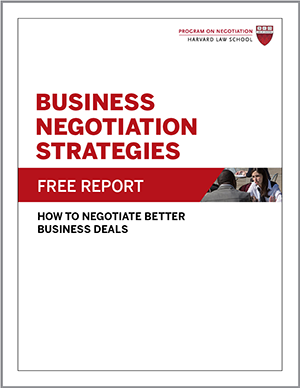
For two days in late May 2012, Apple CEO Tim Cook and Samsung CEO Gee-Sung Choi met with a judge in the U.S. District Court of Northern California in an attempt to reach a settlement in a high-profile U.S. patent case, a sobering example of negotiation in business.
Back in April 2011, Apple had filed a lawsuit accusing Samsung of copying the “look and feel” of the iPhone when the Korean company created its Galaxy line of phones.
Samsung countersued Apple for not paying royalties for using its wireless transmission technology. Since then, the number of patents under dispute has skyrocketed, according to the Korea Times, as has the number of courts involved in various countries. The two companies have repeatedly accused each other of copying the appearance and functions of their smartphones and tablet devices.
The companies showed some willingness to compromise in an effort to avoid going to court: at the California court’s suggestion, they cut the number of disputed patents in half. But even as the CEOs sat down at the table for their mediation, which was urged by the court, Apple filed a motion asking the presiding judge to bar the sale of Samsung’s Galaxy Tab 10.1 on the grounds that the tablet was designed to “mirror” Apple’s second-generation iPad (see also, What are the Three Basic Types of Dispute Resolution? What to Know About Mediation, Arbitration, and Litigation).
Both sides had said they hoped to avoid a legal battle. Given that Samsung is one of Apple’s biggest suppliers, the companies had a strong incentive to move beyond their dispute and build on their ongoing partnership. Yet the two-day mediated talks between the CEOs in late May ended in an impasse, with both sides refusing to back down from their arguments. The suit later went to trial twice, with Apple ultimately winning more than $409 million.
Mediation Between Business Negotiators and Chances of Success
As this example of negotiation in business suggests, mediation as a dispute resolution technique between business negotiators is far less likely to succeed when the parties are grudging participants than when they are actively engaged in finding a solution. When negotiators feel they have spent significant time and energy in a case, they may feel they have invested too much to quit.
Moreover, the longer they spend fighting each other, the more contentious and uncooperative they are likely to become. The lesson? When a business dispute arises, you should always do your best to negotiate or mediate a solution before taking it to the courts.
What did you learn from this negotiation in business? Do you side with Apple or Samsung in this dispute resolution case study? Let us know what you think in the comments.
Related Posts:
- These Examples Illustrate the Importance of Negotiation in Business – Negotiation is an important part of the business world. Here are some negotiation examples in real life drawn from the world of business and commercial transactions.
- Article: Negotiation and Nonviolent Action: Interacting in the World of Conflict
- Lessons for Business Negotiators: Negotiation Techniques from International Diplomacy – What do diplomacy and dealmaking negotiations have in common? Merging the worlds together in order to drawn inferences about negotiation in general, this article explores what aspects of bargaining both diplomacy and business negotiation share and how the negotiation tactics employed by diplomats can be effective at the bargaining table in commercial negotiations.
- 10 Real-World Negotiation Examples – Real-world negotiation examples—whether successes, failures, or somewhere in between—often offer useful lessons for those involved in business negotiations. Here’s an overview of what we can learn from some real-world negotiation examples.
- MESO: Make Multiple Equivalent Simultaneous Offers to Create Value in Dealmaking Table – Knowing how to deal with difficult people is not only an essential life skill but also integral to successful negotiation. What strategies should integrative negotiators use when grappling with an uncooperative counterpart?
Originally published in 2013.






Early resolution is sometimes best. But it is a myth that early resolution always leads to the best outcomes.